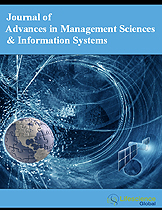jamsis
|
|
|
Abstract: Case-Based Reasoning (CBR) is the process of solving problems by properly adapting the solutions of similar (analogous) problems solved in the past. As an Artificial Intelligence’s method CBR has become recently very popular to information managers increasing the effectiveness and reducing the cost of various human activities by substantially automated processes, such as diagnosis, scheduling, design, etc. In this paper a combination is utilized of the Centre of Gravity defuzzification technique and of the Fuzzy Numbers for assessing the effectiveness of CBR systems. Our new fuzzy assessment approach is validated by comparing its outcomes in our applications with the corresponding outcomes of two traditional assessment methods, the calculation of the mean values and the GPA index. Keywords: Analogical Reasoning (AR), Case-Based Reasoning (CBR), Fuzzy Logic (FL), Centre of Gravity (COG) Defuzzification Technique, Triangular and Trapezoidal Fuzzy Numbers (TFNs and TpFNs), GPA index. |
|
|
|
Abstract: Recent reports note that managers need to operate at the intersection of business and current innovative technology. Most notably, ‘Strategy is not just informed by technology but powered by it’. The opportunity to evaluate aspects of ‘cloud service models’, as critical new systems, is therefore invaluable. Our research offers a pragmatic view of the characteristics of these technologies and a useful approach for identifying which may be most suitable in relation to the generation of business value. An example is provided of cloud service requirements within a multi-national pharmaceutical company (Pharma X) which is considered as a complex organizational context of significant interest. A highly qualitative methodological approach was adopted from personal interviews with a number of senior managers involved in new technology adoption. The extent of ‘benefits’, ‘risks’, ‘when to use’ and ‘when not to use’ were determined for a variety of common cloud service models to provide a schematic of important issues for evaluation and development. The research is insightful for large private sector multinational organisations which extends an analysis beyond the usual public sector studies. We conclude with lessons learned which demonstrate the most appropriate cloud enabled business models that support senior managers engaged in cloud service processes. Keywords: Cloud services, pharmaceutical companies, models, business value. |
|
|
|
Abstract: Academic research based on general linear statistical models has been rapidly moving toward a greater and richer use of longitudinal and panel data econometric methods. By contrast, set-theoretic empirical research, despite its growing diffusion, has been mainly focused on cross-sectional analysis to date. This article covers this void in panel data set-theoretic research. We provide some diagnostic tools to assess a set-theoretic consistency and coverage both cross-sectionally and across time. The suggested approach is based on the distinction between pooled, between and within consistency and coverage, which can be computed using panel data. We use KLD’s panel (1991–2005) to illustrate how the proposed approach can be applied in the context of set-theoretic longitudinal research. Keywords: Set-theoretic methods, Fuzzy sets, Longitudinal research, Panel data, Stakeholders. |
|
|
|
Abstract: This paper is part one of an homage to the seminal paper of Artzner, Delbaen, Eber, and Heath (1997) [1], who proposed a set of axioms that must be satisfied by risk measures in order to be “coherent”. This paper does not aim to add to the knowledge of coherent risk measures, but it aims to prove that coherence matters not only for the mathematician, but also for the investment manager and his clients by constructing simple and transparent examples that show the dangers of working with incoherent risk measures. This way the author hopes to improve communication between the academic communities on one side and on the others side policy-makers and operational decision makers at financial institutions, their regulators and law-makers, who fifteen year after that paper still underestimate the importance of “thinking coherently”. Keywords: Portfolio Selection, Personal Financial Decision Making, Coherent Risk Measures, Strategic Asset Allocation, Suitability of Investments, Value at Risk, Expected Shortfall, Global Exposure, Risk Classification, risk and reward indicator, variance, UCITS IV, FINRA 2011. |



